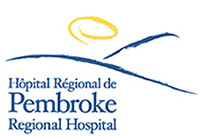PEMBROKE – Regional stroke patients are reaping the benefits of increased direct therapy time during their stay at Pembroke Regional Hospital.
According to Beth Brownlee, Director of the Medical, Rehabilitation and Ambulatory Care programs at PRH, best practice research shows that increasing a stroke patient’s daily amount of therapy time results in better outcomes in their ability to participate in everyday activities.
The hospital’s Rehabilitation department has spent the last two years working to increase the amount of direct therapy time or time that a stroke patient is actively participating in face-to-face rehabilitation therapy during his or her hospital stay.
“The team has been tracking and measuring this time since May 2016 and since implementing changes in the fall of 2016, the average amount of therapy time per patient has increased to over 90 minutes per patient, per day,” Ms. Brownlee said.
In addition to direct therapy, a patient’s daily schedule includes group activities, self-directed exercises, patient specific activities, social dining, exercise classes, education classes and other therapies provided by nurses and social workers.
Ambulatory Programs Manager Martin Burger said that some of the improvements initiated by staff included development of daily schedules for patients and families as well as morning team meetings where patient priorities are set.
Occupational Therapist Sonya Silver said the Rehab team which includes physiotherapists, occupational therapists, rehabilitation assistants, and nursing staff “have worked hard to make changes to allow the therapists to spend more time one-on-one with our patients.”
“The more time spent with our patients means better outcomes for patients who benefit from shorter hospital stays,” added Physiotherapist Chris Seabert.
PRH Physiatrist Dr. Debbie Timpson stated that “In collaboration with staff, patients and families, the entire team has found ways to optimize the amount of therapy that our patients receive daily. This helps our patients to achieve their rehab goals more quickly and transition home sooner.”







![Kenopic/Smith Auction [Paid Ad]](https://whitewaternews.ca/wp-content/uploads/2018/10/advertising-100x75.jpeg)

